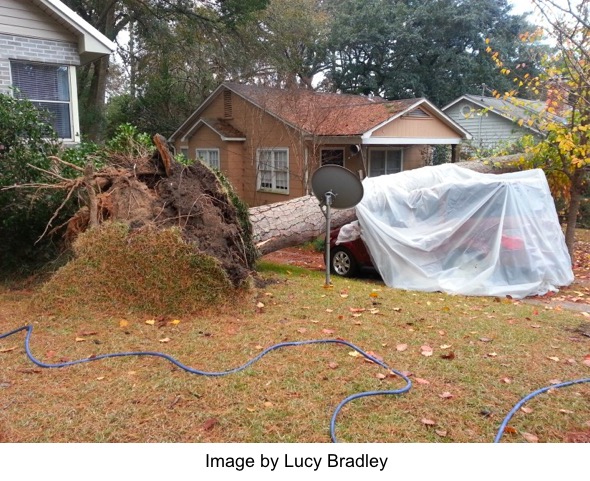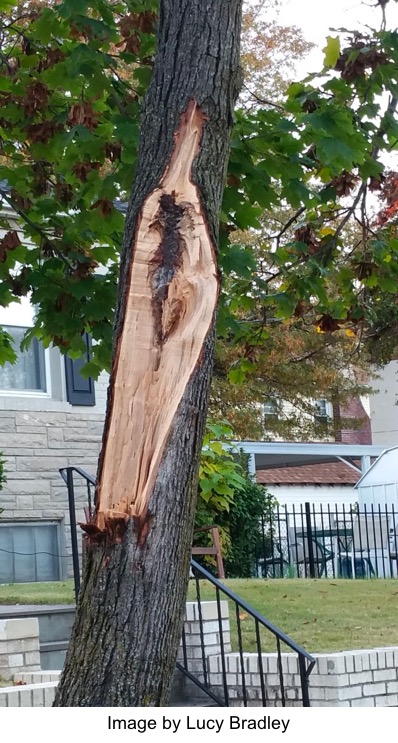Preparing and Managing Storm Damaged Trees
go.ncsu.edu/readext?725003
en Español / em Português
El inglés es el idioma de control de esta página. En la medida en que haya algún conflicto entre la traducción al inglés y la traducción, el inglés prevalece.
Al hacer clic en el enlace de traducción se activa un servicio de traducción gratuito para convertir la página al español. Al igual que con cualquier traducción por Internet, la conversión no es sensible al contexto y puede que no traduzca el texto en su significado original. NC State Extension no garantiza la exactitud del texto traducido. Por favor, tenga en cuenta que algunas aplicaciones y/o servicios pueden no funcionar como se espera cuando se traducen.
Português
Inglês é o idioma de controle desta página. Na medida que haja algum conflito entre o texto original em Inglês e a tradução, o Inglês prevalece.
Ao clicar no link de tradução, um serviço gratuito de tradução será ativado para converter a página para o Português. Como em qualquer tradução pela internet, a conversão não é sensivel ao contexto e pode não ocorrer a tradução para o significado orginal. O serviço de Extensão da Carolina do Norte (NC State Extension) não garante a exatidão do texto traduzido. Por favor, observe que algumas funções ou serviços podem não funcionar como esperado após a tradução.
English
English is the controlling language of this page. To the extent there is any conflict between the English text and the translation, English controls.
Clicking on the translation link activates a free translation service to convert the page to Spanish. As with any Internet translation, the conversion is not context-sensitive and may not translate the text to its original meaning. NC State Extension does not guarantee the accuracy of the translated text. Please note that some applications and/or services may not function as expected when translated.
Collapse ▲With several storms already on the books and more forming, now might be a good time to review management tips for storm-damaged trees.
An ounce of prevention is worth a pound of cure, and this is especially true for new tree plantings. Young trees can easily be selected, arranged, and pruned to help limit potential storm damage. Choose tree species that fit site-specific growing conditions (sunny, shady, wet, dry, etc.) to promote tree health, and locate trees so they do not create additional hazards in the future. You are probably familiar with trees planted under or near power lines that eventually reached into these lines creating issues during storms. These trees often result in downed lines and dangerous pruning operations that could have been avoided.
It is also important to consider trees species that have higher resistance to storm-force winds such as American (Ilex opaca) & Yaupon Holly (Ilex vomitoria). Poorly branched trees such as Bradford Pear (Pyrus calleryana) and trees with brittle branches like Pecan (Carya illinoensis) are hazards in the landscape, especially if they are planted near homes and people. These trees will split and break in heavy winds, leading to excessive fallen debris and detract from the beauty of the landscape. For a more comprehensive list of trees species and their wind resistance ratings, review the University of Florida IFAS Extension note titled “Wind and Trees: Lessons Learned from Hurricanes“.
Additional factors to consider are trees with preexisting growth habits that affect their ability to withstand hurricane winds. Trees with co-dominate leaders can easily split as the narrow angles they form creates added stress on the trunk. Trees with cavities or previous injury (broken branches) can also be suspect. Hazardous trees that can be difficult to spot include trees with decay or poorly formed and functioning root systems. Signs of decay include poor growth and fungal fruiting bodies such as mushrooms, brackets, or conks. They may form in the bark near old wounds, on trunks, and on roots. A poorly developed root system leaves a tree susceptible to being blown over and often invites infection from decaying organisms. Trees growing in saturated soils and exhibiting poor growth should be evaluated closely.
Preventative training and pruning are much easier to perform on smaller and younger trees. Larger trees that have dead, dying, or diseased limbs should be pruned to remove these hazards. Consider hiring a certified arborist to perform these tasks. If large trees with hazards cannot be corrected, then removal of that tree should be considered.
If you do experience tree damage during a storm, first examine the site for safety. Do not attempt to remove tree damage without first determining if it is safe to do so. Leaning trees, downed power lines, twisted trees, and trees under tension pose extreme danger.
Large leaning trees and wind thrown trees with exposed roots ripped from the ground should be removed. Trees with extensive trunk damage, trees with more than 50% canopy loss, and trees with broken central leaders should also be considered for removal. Their survival is suspect and will pose potential hazards in the future.
Consider keeping small trees that have been uprooted or have lost canopy. You can straighten, replant, and stake these trees. If in doubt you may want to wait and reevaluate small trees at a later date if they pose no immediate risk.
For more information on evaluating storm-damaged trees review the NC State Extension note titled “Storm Damaged Landscape Trees“.
If you have questions or would like to learn more, contact Daniel Simpson at 252-745-4121 or email at daniel_simpson@ncsu.edu.





